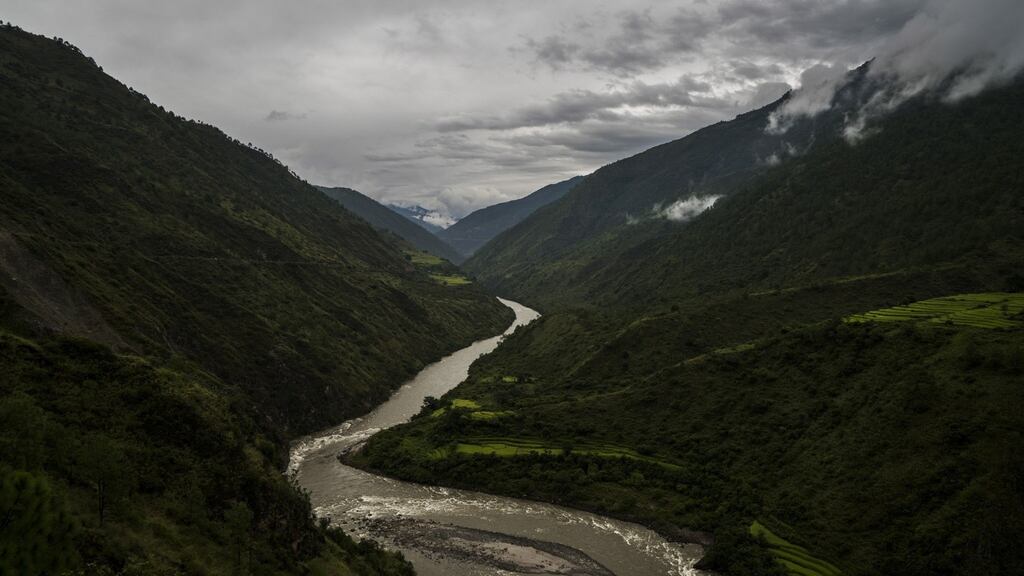The glaciers of the Himalayas are melting at an accelerating rate, according to a study that underscores the impact of climate change on an area that is a critical source of water supply for India and China.
The glaciers have been losing the equivalent of 50cm (20 inches) of ice vertically each year since 2000, melting twice as fast as they were during the 1975-2000 period, according to a forthcoming study in Science Advances that surveys 40 years of satellite data.
The impact of Himalayan glacial melting is significant because the region provides water to about 800 million people across Asia, who depend on seasonal run-off when the ice melts in the spring.
Melting glaciers along the mountain range have meant there has been more water run-off than normal during spring in recent years. However, this trend is expected to reverse in future as the glaciers shrink – potentially leading to drought.
The research comes as global carbon dioxide emissions hit a record high last year, and as the Earth’s average temperature has warmed about one degree compared with pre-industrial times.
"The reason we focused on this section of high mountain Asia is because Himalayan glaciers are so important for water resources," said Joshua Maurer, lead author of the study and a PhD candidate at Columbia University's Lamont-Doherty Earth Observatory.
“The correlation we observe between rising air temperature and the acceleration of glacial melt over the last four decades highlights how vulnerable these glaciers are to climate change and to atmospheric warming,” he added.
Concerns over the impact of warmer temperatures on the world’s ice stores have been rising as the effects become more visible. Earlier this month, unusually warm weather in Greenland led to record melting levels. In the Bering Sea ice levels also reached record winter lows earlier this year.
The glaciers currently contain about 600 billion tons of ice but have lost about a quarter of their mass over the four decades surveyed, according to Mr Maurer.
A growing body of research has documented how melting glaciers will impact the long-term water supplies on which hundreds of millions of people across Asia depend.
A different study, published last month in Nature, found that the level of meltwater production from Himalayan glaciers is about 1.6 times greater than the rate that would keep the glaciers in “balance”.
During times of drought glaciers become the largest suppliers of water to Asia’s major river basin, that study found. It calculated that each year the glaciers release enough water to meet the basic needs of about 220 million people.
Several factors contribute to glacial melting in the Himalayas, including soot that settles on top of glaciers, as well as changing precipitation factors.
Biggest factor
However, the new study in Science Advances suggests that temperature is the single biggest factor that drives the rate of melting.
“The ice loss that we see across the region is quite similar, so that tells us that there is a climate driver that causes these glaciers to melt similarly,” said Mr Maurer.
The study uses satellite images from 1975-2016, including spy satellite images that were recently declassified, to analyse the mass of Himalayan glaciers across a 2,000km stretch that covers India, China, Nepal and Bhutan.
Since 2000, the rate of loss across all the glaciers has been the equivalent of about 50cm of ice on average annually, with much greater ice loss occurring at lower elevations. – Copyright The Financial Times Limited 2019












